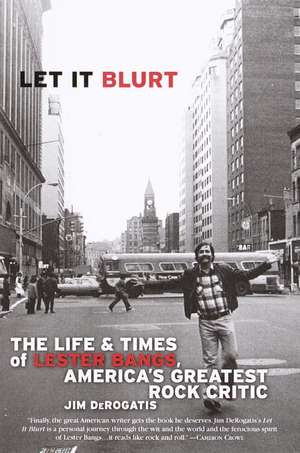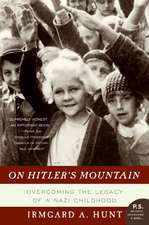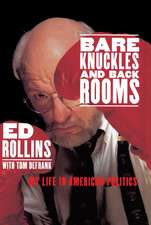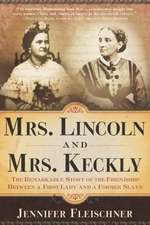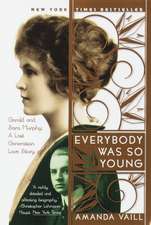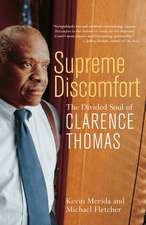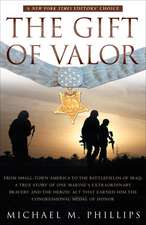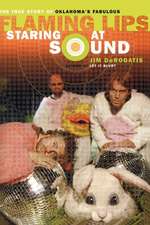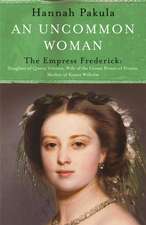Let It Blurt: The Life and Times of Lester Bangs, America's Greatest Rock Critic
Autor Jim DeRogatisen Limba Engleză Paperback – 31 mar 2000
Let It Blurt is a scrupulously researched account of Lester Bangs's fascinating (if often tawdry and unappetizing) life story, as well as a window on rock criticism and rock culture in their most turbulent and creative years. It includes a never-before-published piece by Bangs, the hilarious "How to Be a Rock Critic," in which he reveals the secrets of his dubious, freeloading trade.
| Toate formatele și edițiile | Preț | Express |
|---|---|---|
| Paperback (2) | 80.55 lei 43-57 zile | |
| BROADWAY BOOKS – 31 mar 2000 | 127.07 lei 22-36 zile | |
| Bloomsbury Publishing – 5 aug 2001 | 80.55 lei 43-57 zile |
Preț: 127.07 lei
Nou
Puncte Express: 191
Preț estimativ în valută:
24.32€ • 26.43$ • 20.44£
24.32€ • 26.43$ • 20.44£
Carte disponibilă
Livrare economică 31 martie-14 aprilie
Preluare comenzi: 021 569.72.76
Specificații
ISBN-13: 9780767905091
ISBN-10: 0767905091
Pagini: 352
Dimensiuni: 155 x 231 x 25 mm
Greutate: 0.46 kg
Ediția:New.
Editura: BROADWAY BOOKS
ISBN-10: 0767905091
Pagini: 352
Dimensiuni: 155 x 231 x 25 mm
Greutate: 0.46 kg
Ediția:New.
Editura: BROADWAY BOOKS
Extras
The Closed Circle
Conway Bangs needed a drink. He chain-smoked while pacing nervously in the cool night air outside Escondido Community Hospital--a fancy name for a tiny clinic run by one doctor in a wood-frame house only a little bigger than most of the others here amid the Southern California orange groves. From time to time he heard his wife cry out, and he knew that she must be hurting. Complaining about the pains of the flesh was not the way of the Jehovah's Witnesses, and Norma was nothing if not a faithful soldier.
The doctor had urged Conway to talk some sense into his wife. There were risks in having a child at age forty-three, but Norma wouldn't hear any talk of abortion. The Witnesses forbade it under any circumstances, including a fatal threat to the mother. Conway didn't have much use for his wife's religion, but for once he was glad she stood her ground. A few years earlier the prison doctor had told him he'd never have a child. Them doctors seemed to be wrong a lot, he thought, because his son was born without complications at two minutes before eleven on the night of December 13, 1948.
The baby arrived weighing eight pounds, eight ounces and exercising what sounded like an extremely healthy pair of lungs. The couple named him Leslie Conway in honor of his father, Conway Leslie. Once he saw that Norma and the boy were resting peacefully, Conway ran to spread the news to the rest of the family. "Conway was thrilled to death," said his twenty-one-year-old stepdaughter, Ann St. Clair, one of three children from Norma's first marriage. "When he came up to the house where my husband Ray and I lived, he told us that he had the most beautiful son in the world. Because Leslie was born with a full head of black hair--enough for three or four babies!--I didn't think he was very pretty, but that didn't make any difference. That was Conway's baby boy."
From Ann and Ray's place Conway went to see Ben Catching, Jr., Norma's eldest son. At twenty-three Ben already had a four-year-old boy of his own, Ben Catching III. The two men drove trucks for Escondido Transit Mix. After work they would sit outside Conway and Norma's small rented house near Highway 395, drinking beer on the rickety front porch. Early on the morning of December 14 they drank a toast to young Leslie Bangs.
For several generations on both sides Leslie's forebears were migratory Southwestern farm workers. The families' roots in the United States stretched back far enough for the current members to have forgotten the Old World traditions and even their particular European heritages. They shared some Scottish and English blood, no doubt, and possibly some Irish and German as well. Basically they were the sort of people portrayed in William Faulkner's "Barn Burning" and Nelson Algren's A Walk on the Wild Side. At the time they would have been called Arkies, Okies, drifters, or crackers. In his less charitable moments a grown-up Leslie would call them "white trash."
Leslie's paternal grandparents Gady and Leota Bangs crossed the border from Arkansas to Texas around the turn of the century. They settled in the country between the small towns of Cooper and Enlow about ninety miles northeast of Dallas. Gady farmed, brewed bootleg whiskey, and drank, though not necessarily in that order. A broad, squat man with a penchant for oversize cowboy hats, he was as unpleasant and churlish as the plump, round-faced Leota was sweet and loving. The couple raised five daughters and two sons, including Conway Leslie, born on August 25, 1915. His middle name paid tribute to the sheriff of Delta County, but the family friend never did his namesake any favors. In fact, he was one of the men who sent Conway to prison.
Conway's first arrest came a few months before his eighteenth birthday, six years after he dropped out of school in the seventh grade. Charged with four counts of burglary, he pleaded guilty to one in return for the others being dropped. Because of Conway's age the judge suspended the five-year sentence, but the conviction stigmatized him nonetheless. One day in late 1934 a neighbor accused him of stealing some tools. Conway asserted his innocence, but the man wouldn't listen. The boy flew into a rage and viciously beat his accuser with a wooden bucket. "If Conway saw someone being mistreated, man, he would jump right in there," said his sister Imogene. "He could get angry, but usually when he got angry, he had a right to be angry. He wasn't much of a talker, but when he did talk, it meant something. And if someone beat him, well, he'd just beat them right back."
On January 15, 1935, a jury found Conway guilty of assault with intent to murder. District Court Judge Charles "Chuck" Berry sentenced him to five years for the beating and reinstated the original five-year sentence for burglary. Three weeks later Conway began serving his decadelong term at Huntsville. Among the habits noted on his prison record: intemperance, use of tobacco, and a disdain for organized religion. On the rare occasions later in life when he talked about his incarceration, Conway spoke of being whipped, beaten with chains, and strapped to a plow like a horse. One day he begged off the work detail, complaining of a headache and a painful swelling in the groin. The guards sent him out into the fields, and the next morning he collapsed. The mumps had brought on a case of encephalitis. The prison doctor told him he'd have died if he went without treatment much longer. As it was, he'd probably been rendered sterile.
Conway completed his sentence on September 11, 1945, and he moved back in with his parents. He found work driving dump trucks on construction sites in Dallas, which bustled during the postwar building boom. His younger sisters admired his rugged good looks and compared his hardened features to an outdoorsy, Western version of Humphrey Bogart. Like his father, Conway sometimes drank to excess, but he was a docile drunk, where alcohol only made Gady meaner. The old man's favorite rant was about the new religion that consumed so much of his wife's time. Gady would stand in the doorway and curse Leota as she left for Bible study. "I hope you drive up a goddamn tree and kill yourself!" he'd shout. "Goddamn you and all your Gee-hovah's Witnesses!"
Leota was unflappable. "Gady, honey, you just relax, and I'll see ya back here in a little bit," she'd coo while driving off with her friend, Norma Catching.
Conway would watch these scenes and shake his head. Norma was nine years his senior. She had already buried one husband and raised three children who were living on their own, but he was struck by her youthful beauty. Her quiet dignity in the face of his father's vitriol impressed him, and he was glad that she didn't seem to think less of him because he'd been to prison. He felt like a teenager whenever he talked to her, and he hated to see her go.
Conway Bangs needed a drink. He chain-smoked while pacing nervously in the cool night air outside Escondido Community Hospital--a fancy name for a tiny clinic run by one doctor in a wood-frame house only a little bigger than most of the others here amid the Southern California orange groves. From time to time he heard his wife cry out, and he knew that she must be hurting. Complaining about the pains of the flesh was not the way of the Jehovah's Witnesses, and Norma was nothing if not a faithful soldier.
The doctor had urged Conway to talk some sense into his wife. There were risks in having a child at age forty-three, but Norma wouldn't hear any talk of abortion. The Witnesses forbade it under any circumstances, including a fatal threat to the mother. Conway didn't have much use for his wife's religion, but for once he was glad she stood her ground. A few years earlier the prison doctor had told him he'd never have a child. Them doctors seemed to be wrong a lot, he thought, because his son was born without complications at two minutes before eleven on the night of December 13, 1948.
The baby arrived weighing eight pounds, eight ounces and exercising what sounded like an extremely healthy pair of lungs. The couple named him Leslie Conway in honor of his father, Conway Leslie. Once he saw that Norma and the boy were resting peacefully, Conway ran to spread the news to the rest of the family. "Conway was thrilled to death," said his twenty-one-year-old stepdaughter, Ann St. Clair, one of three children from Norma's first marriage. "When he came up to the house where my husband Ray and I lived, he told us that he had the most beautiful son in the world. Because Leslie was born with a full head of black hair--enough for three or four babies!--I didn't think he was very pretty, but that didn't make any difference. That was Conway's baby boy."
From Ann and Ray's place Conway went to see Ben Catching, Jr., Norma's eldest son. At twenty-three Ben already had a four-year-old boy of his own, Ben Catching III. The two men drove trucks for Escondido Transit Mix. After work they would sit outside Conway and Norma's small rented house near Highway 395, drinking beer on the rickety front porch. Early on the morning of December 14 they drank a toast to young Leslie Bangs.
For several generations on both sides Leslie's forebears were migratory Southwestern farm workers. The families' roots in the United States stretched back far enough for the current members to have forgotten the Old World traditions and even their particular European heritages. They shared some Scottish and English blood, no doubt, and possibly some Irish and German as well. Basically they were the sort of people portrayed in William Faulkner's "Barn Burning" and Nelson Algren's A Walk on the Wild Side. At the time they would have been called Arkies, Okies, drifters, or crackers. In his less charitable moments a grown-up Leslie would call them "white trash."
Leslie's paternal grandparents Gady and Leota Bangs crossed the border from Arkansas to Texas around the turn of the century. They settled in the country between the small towns of Cooper and Enlow about ninety miles northeast of Dallas. Gady farmed, brewed bootleg whiskey, and drank, though not necessarily in that order. A broad, squat man with a penchant for oversize cowboy hats, he was as unpleasant and churlish as the plump, round-faced Leota was sweet and loving. The couple raised five daughters and two sons, including Conway Leslie, born on August 25, 1915. His middle name paid tribute to the sheriff of Delta County, but the family friend never did his namesake any favors. In fact, he was one of the men who sent Conway to prison.
Conway's first arrest came a few months before his eighteenth birthday, six years after he dropped out of school in the seventh grade. Charged with four counts of burglary, he pleaded guilty to one in return for the others being dropped. Because of Conway's age the judge suspended the five-year sentence, but the conviction stigmatized him nonetheless. One day in late 1934 a neighbor accused him of stealing some tools. Conway asserted his innocence, but the man wouldn't listen. The boy flew into a rage and viciously beat his accuser with a wooden bucket. "If Conway saw someone being mistreated, man, he would jump right in there," said his sister Imogene. "He could get angry, but usually when he got angry, he had a right to be angry. He wasn't much of a talker, but when he did talk, it meant something. And if someone beat him, well, he'd just beat them right back."
On January 15, 1935, a jury found Conway guilty of assault with intent to murder. District Court Judge Charles "Chuck" Berry sentenced him to five years for the beating and reinstated the original five-year sentence for burglary. Three weeks later Conway began serving his decadelong term at Huntsville. Among the habits noted on his prison record: intemperance, use of tobacco, and a disdain for organized religion. On the rare occasions later in life when he talked about his incarceration, Conway spoke of being whipped, beaten with chains, and strapped to a plow like a horse. One day he begged off the work detail, complaining of a headache and a painful swelling in the groin. The guards sent him out into the fields, and the next morning he collapsed. The mumps had brought on a case of encephalitis. The prison doctor told him he'd have died if he went without treatment much longer. As it was, he'd probably been rendered sterile.
Conway completed his sentence on September 11, 1945, and he moved back in with his parents. He found work driving dump trucks on construction sites in Dallas, which bustled during the postwar building boom. His younger sisters admired his rugged good looks and compared his hardened features to an outdoorsy, Western version of Humphrey Bogart. Like his father, Conway sometimes drank to excess, but he was a docile drunk, where alcohol only made Gady meaner. The old man's favorite rant was about the new religion that consumed so much of his wife's time. Gady would stand in the doorway and curse Leota as she left for Bible study. "I hope you drive up a goddamn tree and kill yourself!" he'd shout. "Goddamn you and all your Gee-hovah's Witnesses!"
Leota was unflappable. "Gady, honey, you just relax, and I'll see ya back here in a little bit," she'd coo while driving off with her friend, Norma Catching.
Conway would watch these scenes and shake his head. Norma was nine years his senior. She had already buried one husband and raised three children who were living on their own, but he was struck by her youthful beauty. Her quiet dignity in the face of his father's vitriol impressed him, and he was glad that she didn't seem to think less of him because he'd been to prison. He felt like a teenager whenever he talked to her, and he hated to see her go.
Recenzii
"Finally, the great American writer gets the book he deserves. Jim DeRogatis's Let It Blurt is a personal journey through the wit and the world and the ferocious spirit of Lester Bangs...it reads like rock and roll."
--Cameron Crowe
"Let It Blurt tells one of the essential rock and roll stories with great affection and panache. Lester Bangs--paradigm, mystery, great writer, tragicomic presence--has been given the biography he deserves...A splendid book."
--Jonathan Lethem, author of Motherless Brooklyn
"Lester Bangs lived fast, died young, and left a beautiful body of work. Jim DeRogatis, himself a gifted writer on rock and roll, knows both of Bangs's worlds--the music and the journalism--and has written an elegy for one of the few critics whose work is worth reading for itself, apart from its subjects."
--Roger Ebert
"To those who knew him, Lester Bangs was a force of nature, 'larger than life' and all such biz. For a mere book to capture the full sweep of his mind/body at speed and at rest may be too tall an order, but Let It Blurt is a welcome stab indeed at the whole Lester thing."
--Richard Meltzer
--Cameron Crowe
"Let It Blurt tells one of the essential rock and roll stories with great affection and panache. Lester Bangs--paradigm, mystery, great writer, tragicomic presence--has been given the biography he deserves...A splendid book."
--Jonathan Lethem, author of Motherless Brooklyn
"Lester Bangs lived fast, died young, and left a beautiful body of work. Jim DeRogatis, himself a gifted writer on rock and roll, knows both of Bangs's worlds--the music and the journalism--and has written an elegy for one of the few critics whose work is worth reading for itself, apart from its subjects."
--Roger Ebert
"To those who knew him, Lester Bangs was a force of nature, 'larger than life' and all such biz. For a mere book to capture the full sweep of his mind/body at speed and at rest may be too tall an order, but Let It Blurt is a welcome stab indeed at the whole Lester thing."
--Richard Meltzer
Descriere
This raucous and thoroughly researched biography on Lester Bangs (1949-1982)--the gonzo journalist, gutter poet, and romantic visionary of rock writing--is also a window on rock culture in its most turbulent, creative years. Includes Bangs' never-before-published piece, "How to Be a Rock Critic." 20 photos.
